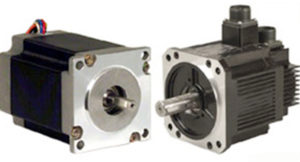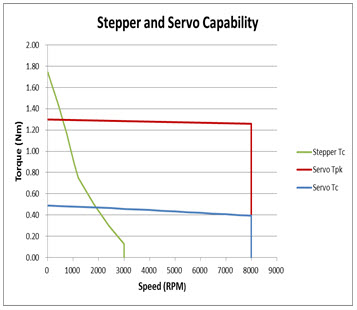Views: 1 Author: Site Editor Publish Time: 2023-03-29 Origin: Site

The vast majority of linear motion applications use a stepper or servo motor to provide torque to a drive mechanism,which is usually a ball screw or lead screw,rack and pinion,or belt and pulley system.Servo motors and stepper motors are designed for very different performance characteristics.Determining which to use for a given application requires understanding these differences and balancing them against other factors,such as cost and complexity.

Linear motion applications are usually driven by servo motors or stepper motors.
●Positioning
The basic premise of a servo motor is that it operates in a closed-loop system,which means that an encoder or feedback device sends signals to the controller indicating the actual position of the motor.This information is compared to the command position and the controller sends a correction signal to the motor to minimize error.The result is a very strict positioning accuracy and more reliable positioning than stepper motors.However,closed-loop systems require adjustment of control parameters and are more time-consuming to set up.The additional components and greater complexity required for feedback also make them more expensive than steppers.
The stepper motor operates in an open-loop system without a feedback mechanism to confirm whether the motor has actually reached the instructed position.With stepper motors, however,it is often easier to achieve precise positions because they move in discrete step sizes - up to 500 steps per revolution,meaning that each step equals 0.75 degrees of rotation of the motor.Stepper motors do not "lose" step size when operating within their design limits,thus providing very good positioning accuracy for applications with predictable torque and speed requirements.
●Speed
The general rule is that stepper motors are best suited for applications that operate at 1000 rpm and below.This is because at higher speeds,the torque production of the stepper motor decreases rapidly.Servo motors can operate over a wide range of speeds,and they are often a better choice for high-speed applications.
At standstil,the stepper motor can use its braking torque to hold the load in place without powering the motor.Servo motors are also able to maintain load at standstill but need to power the motor in order to do so.Furthermore,when at standstill,the servo motor is never completely stationary because the controller constantly reads the feedback from the encoder and issues a move command to compensate for any position errors.(This phenomenon is sometimes called"finding"location.
●Torque
Stepper motors rapidly lose torque capacity with increasing speed,and torque typically declines at speeds above 1000 rpm.However,at lower speeds,stepper motors have excellent torque generation for a given motor size.However,it is important not to exceed the rated torque of the stepper motor (which limits its ability to accelerate),as doing so can result in stepper loss or cause the motor to stall.
Servo motors are the better technology for applications that require good torque generation at high speeds.The servo system is also able to maintain a given torque even when the motor speed changes.

Servo motor has peak torque rating(TPK)and continuous torque rating(Tc).Note that the continuous torque rating of the servo motor(blue)does not decrease as dramatically as the continuous torque rating of the stepper motor(green)as the speed increases.
In contrast to servo motors that consume only the current needed to achieve the desired movement, stepper motors absorb current continuously regardless of load and speed. This results in higher heat production,which can be a negative factor in some applications.
In general,servo motors are a better choice for applications that require accurate positioning, high speed,and/or the ability to withstand varying loads(especially those applications that may require higher than rated motor torque).Stepper motors offer a simpler and more cost effective solution for applications that do not require position feedback and operate only within the limitations of the motor's design.
Click to select ALM high quality linear motion components for your application:
Linear Module, Ball Screw, Lead Screw- ALM (autolinearmotion.com)